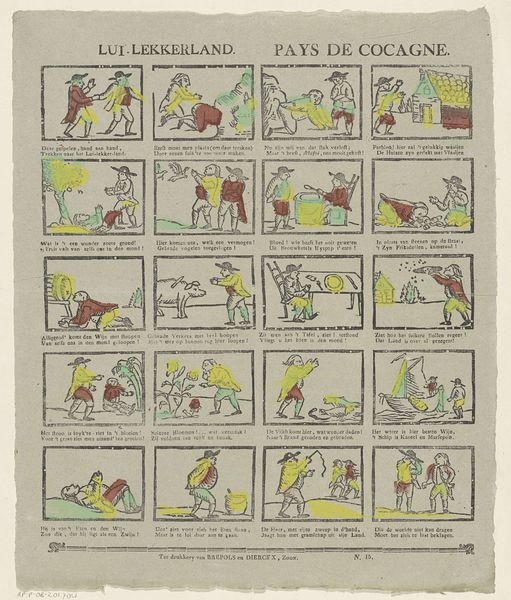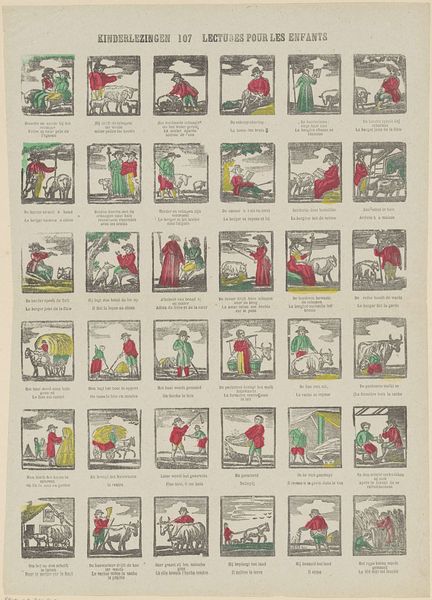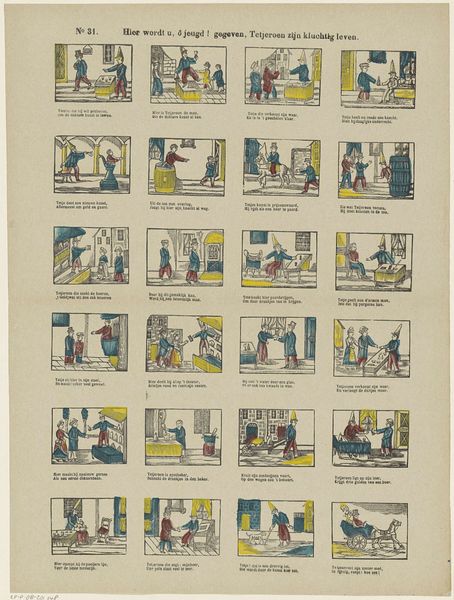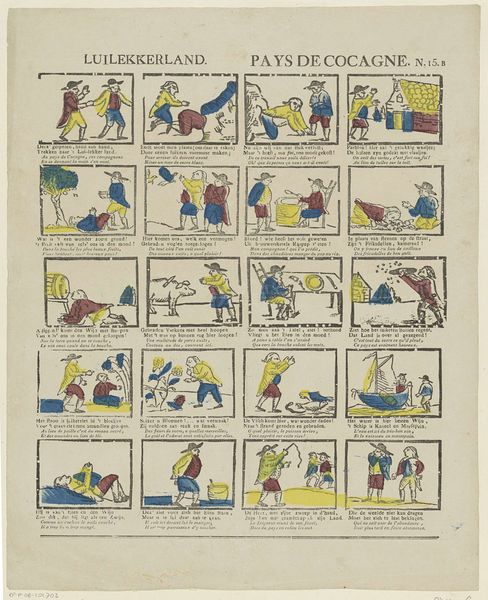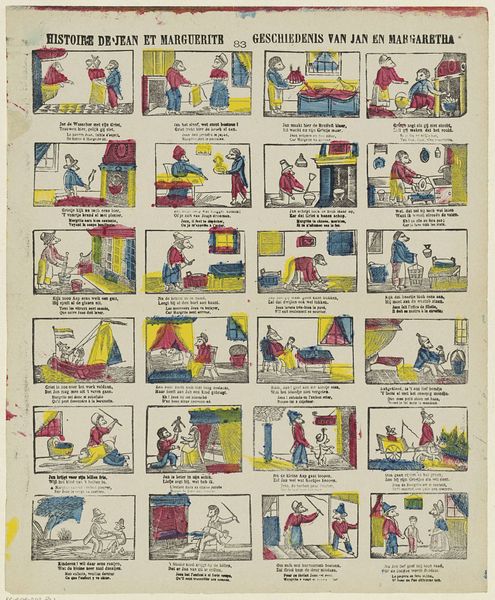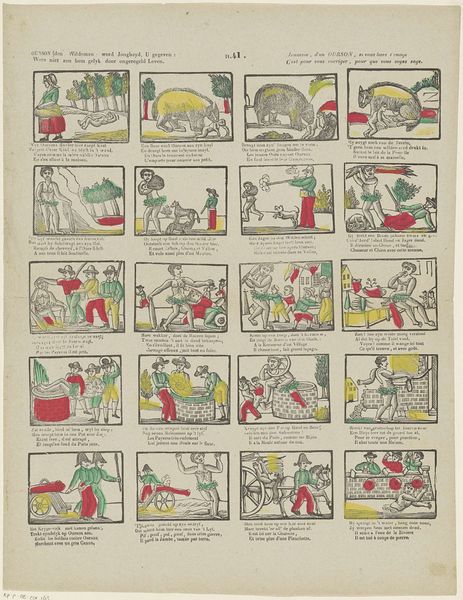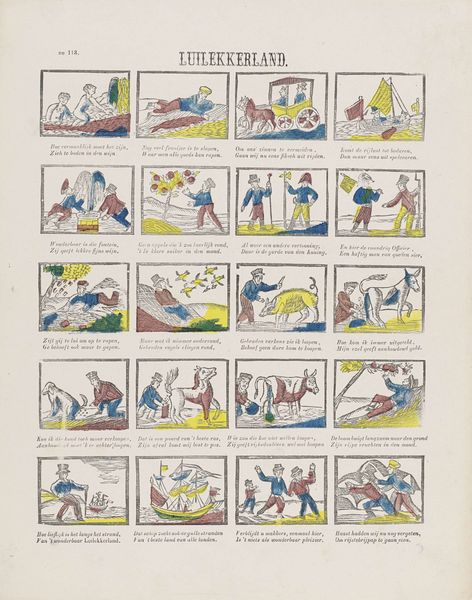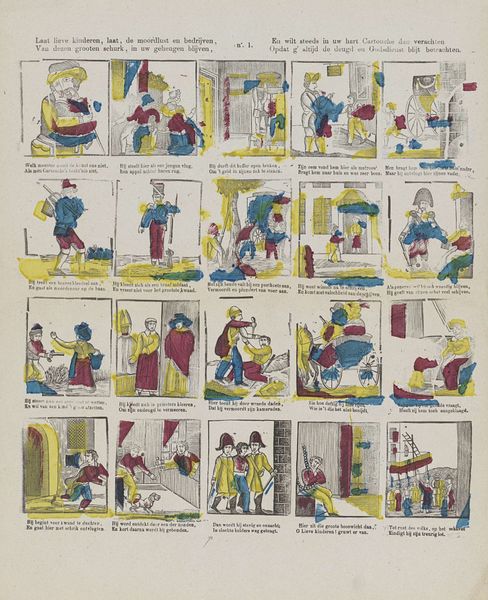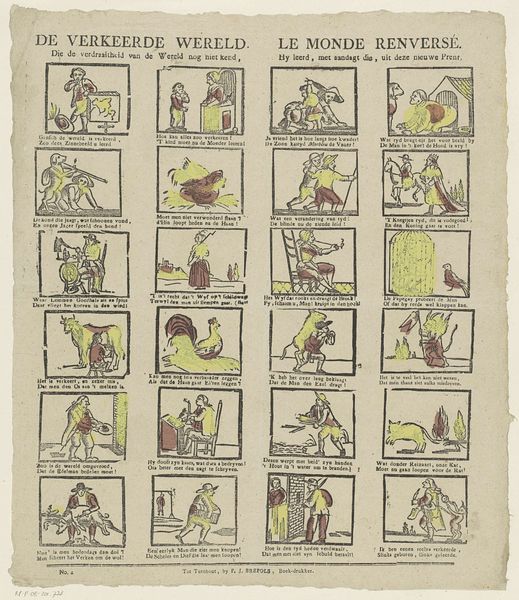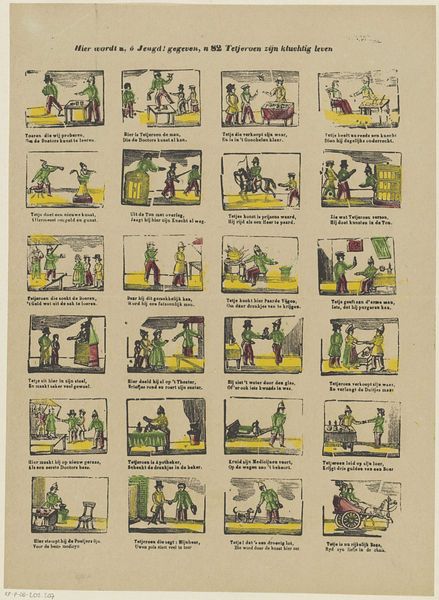
Maar zie toch wat vieze kwasten, / Kon men hen van den neus ontlasten / Regardez quels hommes bizarres, / Si de leur nez, on pourait les débarrasser 1866 - 1902
0:00
0:00
drawing, print, etching
#
portrait
#
drawing
#
comic strip sketch
#
narrative-art
# print
#
etching
#
caricature
#
old engraving style
#
cartoon sketch
#
personal sketchbook
#
sketchwork
#
ink drawing experimentation
#
folk-art
#
comic
#
sketchbook drawing
#
storyboard and sketchbook work
#
cartoon carciture
#
sketchbook art
Dimensions: height 428 mm, width 336 mm
Copyright: Rijks Museum: Open Domain
Editor: So, this is "Maar zie toch wat vieze kwasten…" by Franciscus Antonius Beersmans, created sometime between 1866 and 1902. It's a print, seemingly an etching with these almost cartoonish figures… almost a comic strip of sorts. It's quite bizarre! What do you make of it? Curator: Bizarre indeed. What we see here is rooted in a rich tradition of social satire. The text references 'dirty brushes' and the desire to relieve them of their noses, immediately positioning these figures as objects of ridicule. Consider how the 19th century saw an explosion in print culture. Caricatures like these offered a powerful way to critique societal figures. Editor: So, this isn't just random silliness; it’s actually… political? Curator: Not necessarily high politics, but certainly social commentary. Think about who gets represented this way, and why. The exaggerated noses are key. Noses were, and sometimes still are, a common feature in caricatures used to depict certain ethnic or social groups. Who was Beersmans implicitly targeting with this imagery? Editor: That's... uncomfortable to consider. But the captions... they seem playful, not overtly mean. Curator: Exactly. The humor softens the critique, making it palatable. However, the underlying power dynamics remain. The printing press allowed for the mass dissemination of such images. It is crucial to ask who controlled those presses, and whose voices were amplified through them. Whose were silenced, or mocked? Editor: It’s fascinating how seemingly lighthearted art can reveal complex social tensions when we start digging into the history behind it. Curator: Precisely. This work prompts us to examine how images, even humorous ones, participate in shaping public perception and reinforcing existing power structures. Editor: Well, I’ll definitely look at caricatures differently from now on. Thanks for the insight. Curator: My pleasure. Looking beneath the surface is always the key!
Comments
No comments
Be the first to comment and join the conversation on the ultimate creative platform.

